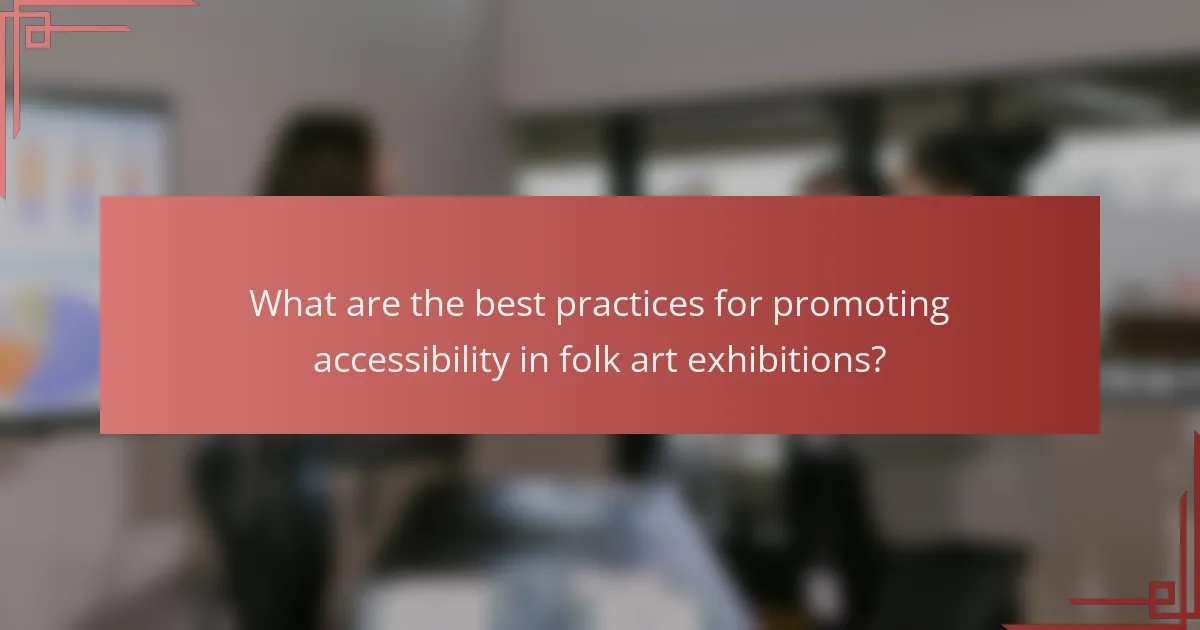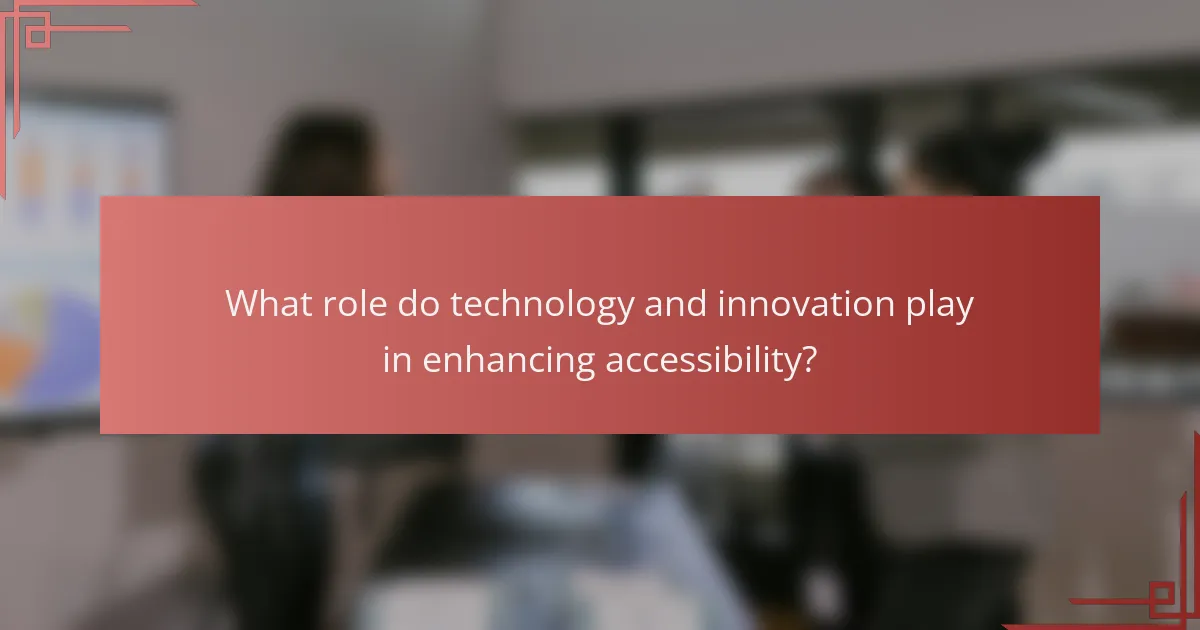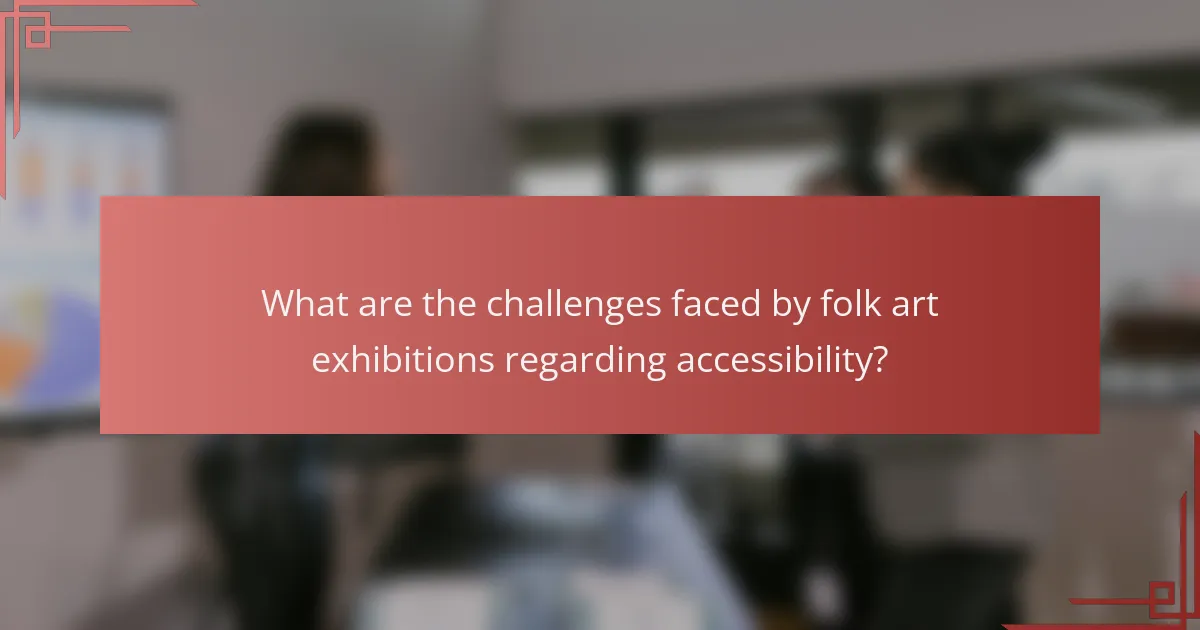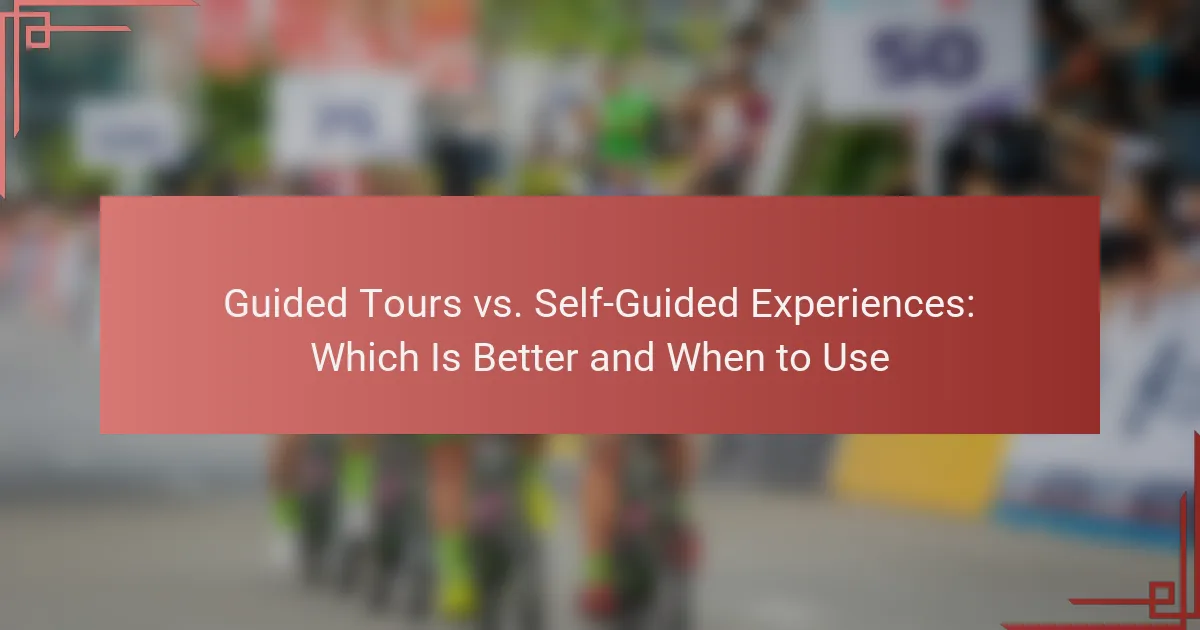Folk art exhibitions in the US prioritize accessibility to create an inclusive environment for all visitors. By offering features such as wheelchair access, sign language interpretation, and audio guides, these exhibitions aim to enhance the experience for individuals with diverse needs. Additionally, engaging with the community and implementing tailored programs further promote visitor inclusion and ensure that everyone can appreciate the richness of folk art.

What accessibility options are available at folk art exhibitions in the US?
Folk art exhibitions in the US typically offer various accessibility options to ensure all visitors can enjoy the experience. These options include wheelchair access, sign language interpretation, audio guides for the visually impaired, and quiet spaces for sensory relief.
Wheelchair access
Most folk art exhibitions provide wheelchair access to ensure mobility for all visitors. This includes ramps, elevators, and accessible restrooms. It’s advisable to check the specific venue’s website or contact them directly for detailed information about their accessibility features.
Some exhibitions may offer rental wheelchairs or mobility scooters, which can enhance the visitor experience. Always confirm availability in advance, especially during busy events.
Sign language interpretation
Many folk art exhibitions offer sign language interpretation for deaf or hard-of-hearing visitors. This service is often available during guided tours or special events. It’s best to check the exhibition schedule and request interpretation services in advance to ensure they are provided.
Some venues may also provide written materials or captions for displays, enhancing accessibility for all visitors. Look for these resources when planning your visit.
Audio guides for the visually impaired
Audio guides are commonly available at folk art exhibitions, providing descriptions of artworks and exhibits for visually impaired visitors. These guides often include detailed narratives that enhance understanding and appreciation of the art. Check if the exhibition offers audio guides in multiple formats, such as handheld devices or smartphone apps.
Some venues may also provide tactile exhibits or braille descriptions to further support visually impaired visitors. Inquire about these options when planning your visit.
Quiet spaces for sensory relief
Quiet spaces are essential for visitors who may experience sensory overload in busy exhibition environments. Many folk art exhibitions designate areas where individuals can take a break from the noise and crowds. These spaces are typically equipped with comfortable seating and calming decor.
It’s beneficial to identify these quiet areas upon arrival or ask staff for assistance. Planning short breaks can help ensure a more enjoyable experience for those who may need sensory relief during their visit.

How can folk art exhibitions improve visitor inclusion?
Folk art exhibitions can enhance visitor inclusion by implementing strategies that cater to diverse audiences, ensuring accessibility and engagement for all. This involves creating welcoming environments, offering tailored programs, and actively seeking input from various community members.
Community outreach programs
Community outreach programs play a crucial role in making folk art exhibitions more inclusive. These initiatives can include workshops, school visits, and local artist collaborations that invite participation from underrepresented groups. By engaging with the community, exhibitions can better reflect the diverse cultural narratives present in the area.
For example, hosting art-making sessions in local neighborhoods can foster a sense of ownership and connection to the exhibition. Additionally, providing free or discounted admission for community members can encourage wider attendance and participation.
Collaborations with local disability organizations
Collaborating with local disability organizations is essential for creating accessible folk art exhibitions. These partnerships can help identify specific needs and implement necessary accommodations, such as wheelchair access, sensory-friendly hours, or sign language interpreters. Engaging with these organizations ensures that the exhibition is designed with inclusivity in mind.
Exhibitions can also offer guided tours tailored for individuals with disabilities, enhancing their experience and understanding of the artwork. Regular training for staff on disability awareness can further improve visitor interactions and overall accessibility.
Feedback mechanisms for diverse audiences
Establishing feedback mechanisms allows folk art exhibitions to continually improve visitor inclusion. Surveys, suggestion boxes, and focus groups can provide valuable insights into the experiences of diverse audiences. This feedback can guide future programming and accessibility efforts.
Exhibitions should actively promote these feedback channels, ensuring that all visitors feel encouraged to share their thoughts. Regularly reviewing and acting on this feedback demonstrates a commitment to inclusivity and helps create a more welcoming environment for everyone.

What are the best practices for promoting accessibility in folk art exhibitions?
Promoting accessibility in folk art exhibitions involves implementing strategies that ensure all visitors can fully engage with the artwork and experience. Key practices include clear signage, staff training, and inclusive marketing to accommodate diverse needs.
Clear signage and information
Effective signage is crucial for guiding visitors through an exhibition. Use large, legible fonts and high-contrast colors to enhance visibility. Incorporating symbols and images can also help convey information quickly and clearly.
Provide information in multiple formats, such as braille, audio guides, and digital apps, to cater to different accessibility needs. Ensure that maps and guides are available in accessible formats, allowing all visitors to navigate the space comfortably.
Staff training on accessibility
Training staff on accessibility best practices is essential for creating an inclusive environment. Staff should be knowledgeable about the specific needs of visitors with disabilities and how to assist them effectively. This includes understanding mobility aids, communication techniques, and emergency procedures.
Regular workshops can help staff stay updated on accessibility standards and foster a culture of inclusion. Encourage staff to engage with visitors directly to understand their needs and provide personalized assistance when necessary.
Inclusive marketing strategies
Inclusive marketing strategies ensure that all potential visitors are aware of the exhibition and its accessibility features. Use diverse imagery and language in promotional materials to reflect the community’s diversity. Highlight accessibility options prominently in advertisements and social media posts.
Collaborate with local organizations that support individuals with disabilities to reach a broader audience. Offering special previews or events tailored for these groups can also enhance engagement and demonstrate a commitment to inclusion.

What role do technology and innovation play in enhancing accessibility?
Technology and innovation significantly improve accessibility in folk art exhibitions by providing diverse options for visitors with varying needs. These advancements create inclusive experiences, ensuring that everyone can engage with the art and culture on display.
Virtual exhibitions and tours
Virtual exhibitions and tours allow visitors to explore folk art from the comfort of their homes, making art accessible to those with mobility challenges or geographical limitations. These online platforms often include high-resolution images, videos, and detailed descriptions, enhancing the viewing experience.
Many virtual tours are designed with accessibility features such as screen reader compatibility and closed captioning, catering to individuals with visual or hearing impairments. Institutions can also offer guided virtual tours led by knowledgeable curators, providing an interactive experience that mimics an in-person visit.
Mobile apps for navigation
Mobile apps designed for navigation within exhibition spaces can greatly enhance accessibility for visitors with disabilities. These apps often feature real-time location tracking, audio descriptions, and visual aids to help users navigate the venue easily.
When selecting a mobile app, look for features like customizable routes that accommodate different mobility needs and the ability to access information about specific artworks or installations. Some apps may also provide multilingual support, making them useful for a diverse audience.
Augmented reality experiences
Augmented reality (AR) experiences can enrich the visitor’s engagement with folk art by overlaying digital information onto physical exhibits. This technology can provide additional context, such as artist interviews or historical background, enhancing understanding and appreciation.
For effective AR experiences, ensure that the technology is user-friendly and compatible with a variety of devices, including smartphones and tablets. Consider offering tutorials or assistance for visitors unfamiliar with AR, ensuring that everyone can benefit from this innovative approach to art appreciation.

What are the challenges faced by folk art exhibitions regarding accessibility?
Folk art exhibitions often encounter significant challenges related to accessibility, impacting the ability of diverse audiences to engage fully. These challenges include funding limitations and a lack of awareness among organizers about the needs of visitors with disabilities.
Funding limitations
Many folk art exhibitions struggle with limited budgets, which can hinder their ability to implement necessary accessibility features. Funding constraints may prevent the installation of ramps, accessible restrooms, or assistive technologies that enhance the visitor experience for individuals with disabilities.
Exhibitions can explore various funding sources, such as grants from arts councils or partnerships with local businesses, to improve accessibility. Allocating a portion of the budget specifically for accessibility initiatives can also ensure that these needs are prioritized.
Lack of awareness among organizers
Organizers of folk art exhibitions may not fully understand the specific accessibility requirements of their audience. This lack of awareness can lead to inadequate planning and the omission of essential accommodations, such as sign language interpreters or sensory-friendly spaces.
To address this issue, organizers should engage with disability advocacy groups and seek feedback from potential visitors with disabilities during the planning stages. Training staff on accessibility best practices can also foster a more inclusive environment for all attendees.



